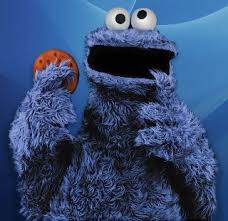nLab Monster group
Context
Exceptional structures
exceptional structures, exceptional isomorphisms
Examples
-
exceptional finite rotation groups:
-
and Kac-Moody groups:
-
exceptional Jordan superalgebra,
Interrelations
Applications
Philosophy
Group Theory
- group, ∞-group
- group object, group object in an (∞,1)-category
- abelian group, spectrum
- super abelian group
- group action, ∞-action
- representation, ∞-representation
- progroup
- homogeneous space
Classical groups
Finite groups
Group schemes
Topological groups
Lie groups
Super-Lie groups
Higher groups
Cohomology and Extensions
Related concepts
Contents
Idea
The Monster group is a finite group that is the largest of the sporadic finite simple groups. It has order
and contains all but six (the ‘pariah groups’) of the other 25 sporadic finite simple groups as subquotients, called the Happy Family.
See also Moonshine.
History
The Monster group was predicted to exist by Bernd Fischer and Robert Griess in 1973, as a simple group containing the Fischer groups and some other sporadic simple groups as subquotients. Subsequent work by Fischer, Conway, Norton and Thompson estimated the order of and discovered other properties and subgroups, assuming that it existed. In a famous paper
- Robert Griess, The Friendly Giant , Inventiones (1982)
Griess proved the existence of the largest simple sporadic group. The author constructs “by hand” a non-associative but commutative algebra of dimension 196883, and showed that the automorphism group of this algebra is the conjectured friendly giant/monster simple group. The name “Friendly Giant” for the Monster did not take on.
After Griess found this algebra Igor Frenkel, James Lepowsky and Meurman and/or Borcherds showed that the Griess algebra is just the degree 2 part of the infinite dimensional Moonshine vertex algebra.
There is a school of thought, going back to at least Israel Gelfand, that sporadic groups are really members of some other infinite families of algebraic objects, but due to numerical coincidences or the like, just happen to be groups (see this nCafe post). One version of this, in the case of the Monster (and perhaps for other sporadic groups via Moonshine phenomena) is that what we know as the Monster is just a shadow of a 2-group, as the Monster can be constructed as an automorphism group of a conformal field theory, a structure rich enough to have a automorphism 2-group(oid) (see this nCafe discussion).
Presentation
Via Coxeter groups
The Monster admits a reasonably succinct description in terms of Coxeter groups. Let denote the linear graph with vertices with an edge between adjacent numbers and no others. If is the terminal (1-element) graph, there is a map , mapping the vertex of to the vertex . Regarding this as an object in the undercategory , let be the coproduct of the three objects , , in . This (pointed) graph has 12 elements and is shaped like a , with arms of length 4, 4, 3 emanating from a central vertex of valence .
Regard as a Coxeter diagram. The associated Coxeter group is given by a group presentation with 12 generators (represented by the vertices) of order (so 12 relators of the form ), with a relation if are adjacent vertices (so 11 relators, one for each edge), and if are non-adjacent (55 more relators). This Coxeter group (12 generators, 78 relators) is infinite, but by modding out by another strange ‘spider’ relator
the resulting quotient turns out to be a finite group. Here is the central vertex of valence , are on an arm of length with adjacent to and adjacent to ; similarly for on the other arm of length , and for on the arm of length . See here if this is not clear.
It turns out that has a center of order , and the Monster is the quotient, i.e. the indicated term in the exact sequence
This implicitly describes the Monster in terms of 12 generators and 80 relators.
Such “-group” presentations (Coxeter group based on a similar -diagram, modulo a spider relation) are linked to a number of finite simple group constructions, the most famous of which is perhaps which is a presentation of the “Bimonster” (the wreath product of the Monster with ). See Ivanov for a general description of these. The presentation of the Monster given above was established in Ivanov2.
Via automorphisms of a super vertex operator algebra
There is a super vertex operator algebra, the Monster vertex operator algebra, whose group of of automorphisms of a VOA is the monster group.
(Frenkel-Lepowski-Meurman 89, Griess-Lam 11)
Related concepts
References
-
Adam P. Goucher, Presentation of the Monster Group, (MO comment 2013-09-15)
-
Alexander Ivanov, Y-groups via transitive extension, Journal of Algebra, Volume 218, Issue 2 (August 15, 1999), 412–435. (web)
-
A. A. Ivanov, Constructing the Monster via its Y-presentation, in Combinatorics, Paul Erdős is Eighty, Bolyai Society Mathematical Studies, Vol. 1 (1993), 253-270.
-
Igor Frenkel, James Lepowsky, Arne Meurman, Vertex operator algebras and the monster, Pure and Applied Mathematics 134, Academic Press, New York 1998. liv+508 pp. MR0996026
-
Robert Griess Jr., Ching Hung Lam, A new existence proof of the Monster by VOA theory (arXiv:1103.1414)
-
Andre Henriques: of the monster (2011) [MI:q/69222]
-
Gerald Höhn, Martin Seysen: The Order of the Monster Finite Simple Group [arXiv:2508.01037]
Possible relation to bosonic M-theory:
- Alessio Marrani, Michael Rios, David Chester, Monstrous M-theory, Symmetry 15 2 (2023) 490; [doi:10.3390/sym15020490, arXiv:2008.06742]
Discussion of aspects of the Monster group via (Platonic) 2-groups:
-
Nora Ganter, Subtle Symmetries and the Refined Monster, project description (2018) [pdf, pdf]
-
Nora Ganter, Looking for a Refined Monster [arXiv:2405.16410]

Last revised on August 5, 2025 at 06:04:43. See the history of this page for a list of all contributions to it.